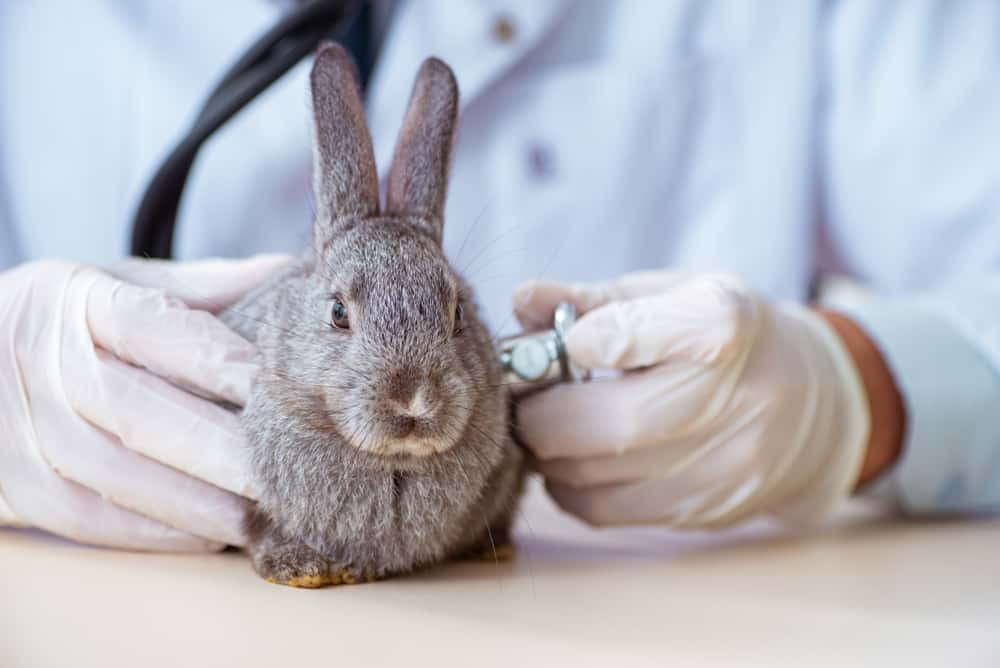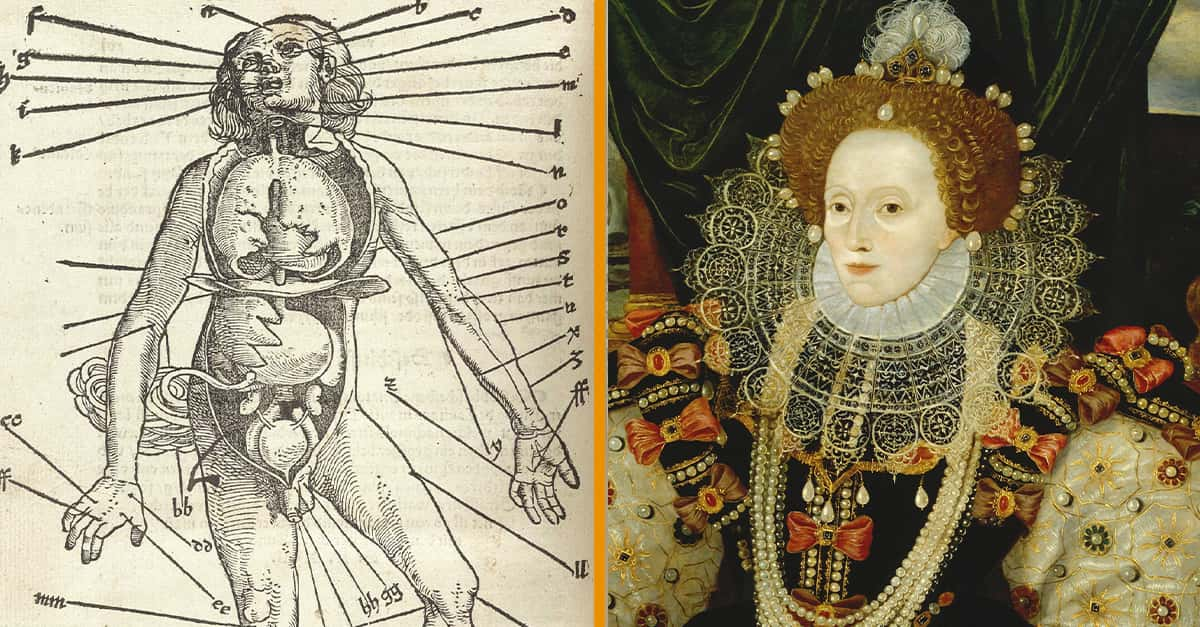Mary Shelley once wrote of a man, a doctor who wished to overcome death by bringing the dead back to life. Frankenstein is a classic romantic tale of how man shouldn’t use science to play god—but people generally haven’t listened. The end is scary, and every day, science is trying to find a way to beat it off with a stick rather than allow nature to have the final say in what happens to us. To scratch that macabre itch, here are 25 facts about the real-life history of resurrections.
History Of Resurrections Facts
1. Don’t Go Breaking My Heart
Out in Russia, at the Imperial Academy of Sciences in St. Petersburg, a researcher by the name of Aleksei Kuliabko successfully revived a rabbit heart 44 hours after it had passed on. This was all the way back in 1902. Later that year—and after more than a few failures—Kuliabko revived a human heart more than a day past death!
2. Come Back, Lassie
Fellow Russian Fedor Andreev was researching the effects of electricity on the heart. After shocking it, Andreev revived a dog with an injection of adrenalin and saline. This restored the dogs heart, lungs, and brain.
3. Miracle Cure
In 2017, scientists working for Bioquark hoped to revive a project they were working on to use stem cells, electrical nerve stimulation, and laser therapy to revive people who are clinically braindead. They first launched the study in India, but didn't clear it with authorities first, who shut it down. In 2017, they hoped to relaunch in Latin America. The scientific literature doesn’t have much hope that this will work, but Bioquark is still going to try.
4. Back-Up Plan
When first President of the United States George Washington fell ill in 1799, his friend physician William Thornton came to see if he could help his buddy out. Washington was suffering from an infection in his throat and Thornton was pretty sure that a quick tracheotomy was all Washington needed. Unfortunately, by the time Thornton had reached Washington’s home, Washington had passed on.
Thornton was understandably upset, this was after all his best friend and the first President of the United States, not the kind of guy you want to fail to save. However, Thornton had a back-up plan. “The weather was very cold, & he [Washington] remained in a frozen state, for several Days. I proposed to attempt his restoration, in the following manner. First to thaw him in cold water, then to lay him in blankets, & by degrees & by friction to give him warmth, and to put into activity the minute blood vessels, at the same time to open a passage to the Lungs by the Trachaea, and to inflate them with air, to produce an artificial respiration, and to transfuse blood into him from a lamb. If these means had been resorted to, & had failed all that could be done would have been done.”
His plan wasn’t backed up by anyone else though, and so they never tried it again. 20 years later Thornton was still a little bitter that no other doctors wanted to give his idea for reviving Washington a go.
5. It’s Alive!
Lazarus Syndrome is a real-life medical condition. It’s occurred 38 times since 1982. Lazarus syndrome is “autoresuscitation after failed cardiopulmonary resuscitation.” Doctors don’t really know why it happens, and it is an extremely rare medical condition.
6. Digital Age
Some tech companies are working on ways to bring your loved ones back after they’ve passed on. Well, not the physical body, but working on a simulation of people. Through massive data pulls from your online presence, the Mushtaq Ahmad Mirza Project hopes to be able to recreate the experience of interacting with a deceased loved one.
7. Give It A Day Or Two
In 2011, a woman attempted to take her own life in Japan by going into the forest and overdosing. The next morning she was found by a hapless parkgoer. By the time emergency personnel got there, her body temp was 20C (68F), she had no pulse, and she wasn’t breathing. They tried to restart her heart, and nothing happened. That’s when doctors connected her to an ECMO (extracorporeal membrane oxygenation) machine, which acted as her lungs and heart, and decided to give it time.
After a few hours, she woke up. The cool temperature in the woods helped to protect the woman’s cells, and despite the fact that she’d technically been gone for ten hours, the hospital was able to revive her with no lasting damage.
8. Blowing Smoke
The Royal Humane Society was started in England in 1774 as a charity for helping people who had apparently drowned. One of the founders, a physician named William Hayes, would give money to anyone who brought him someone who appeared to have drowned. He’d then attempt artificial respiration and tobacco smoke enemas as a way to try and revive that drowned person.
 Wikimedia Commons, Wellcome Images
Wikimedia Commons, Wellcome Images
9. Frog Legs
Back in the 18th century, Luigi Galvani started studying what electricity could do to dead tissue. He hooked up frogs’ legs to a current and did get them to move around. Galvani believed that electricity could be used to raise those who had passed on, though he didn’t get a chance to start working on it with human bodies.
His efforts were mostly disbelieved in the scientific community at the time and it fell to his nephew to prove his science was meaningful.

Sign up to our newsletter.
History’s most fascinating stories and darkest secrets, delivered to your inbox daily. Making distraction rewarding since 2017.
10. Like Nephew Like Uncle
Galvani might not have gotten a chance to experiment with human bodies, but his nephew Giovanni Aldi did. After Aldi proved that his uncle wasn’t a quack, and performed the same experiments on larger animals to get them moving and shaking, he did move on to human bodies. He collected the body of a hanged felon in England, hooked it up to a battery, and let it go.
Some witnesses of the event believe they saw the body inhale. This event would later go on to inspire Mary Shelley, the author of Frankenstein.
11. Holy Man
In Zimbabwe, a self-styled prophet attempted to bring a deceased person back to life at a funeral. It didn’t work, upset the man’s family, and wound up getting the prophet sent to jail. Some miracles are clearly best left alone.
12. The Dead Will Walk
Back in the 17th century, an Englishman named John Lacy got mixed up in a religious movement known as the French Prophets. Lacy delivered prophecies and said he wrote for the divine. Next up, all he had to do was revive fellow French Prophet Thomas Emes—who had passed on December 22—to really seal the deal for his religious movement. It seems at this point to really be a holy man, you’ve gotta bring a deceased person back to life, or who will believe you.
To be entirely fair to Lacy, a 12-year-old girl had predicted that Emes would rise on May 25…and as we all know, 12-year-olds are a great source of factual information. Lacy tried to revive Emes with a crowd of 20,000 watching him fail to bring the prophet back to life. After that, people were even less inclined to the French Prophets religious movement seriously.
 Shutterstock
Shutterstock
13. Successful Resurrection
One holy man reportedly did bring someone back to life. That man was Mormon church leader Lorenzo Snow. When his niece passed on in the middle of one of his speeches, he immediately left his speech to go to her house and wake her back up. Supposedly he said, “Dear Ella, I command you, in the name of the Lord, Jesus Christ, to come back and live, your mission is not yet ended. You shall yet live to perform a great mission.”
Then he left. An hour later she did wake back up, and told her parents that her Uncle had called her back.
14. From Russia with Love
In 1925, following the grand tradition of Russians trying to stop the inevitable like Kuliabko and Andreev, there was Sergei Bryukhonenko. He invented a machine he called an “autojektor." The machine sucked blood into a glass container where it re-oxygenated it before pumping it back into the body and circulating it. Using the autojektor, Bryukhonenko kept a dog’s head alive that way for 100 minutes.
Eventually, Bryukhonenko got his hands on the body of someone who had taken their own life and hooked it up to his machine. The man had been gone for three hours, and it took a few more hours for the machine to work. Reportedly the man’s heart started beating again, and he even opened his eyes. More than a little spooked out, the doctors turned off the machine, and the man went back to being deceased.
15. Teamwork
A group of Christian healers known as the Dead Raising Team claims to have helped 11 people come back to life through the power of faith healing. They won’t give out the names of people they’ve brought back though, so it’s up for you to decide if their claims are true.
16. Braaaains
Professor Sergio Canavero believes that the world’s first brain transplant is only a few years away – and could be the way humans overcome the inevitable. "They (religious beliefs) will no longer be necessary, as humans will no longer need to be afraid […] They will know as a scientific fact that our consciousness – or whatever it is – survives […] We no longer need a Catholic Church, no Judaism, and no Islam because religions, in general, will be obsolete,” Canavero said…in no way sounding creepy or like he was approaching a line man was not meant to cross.
17. Science Fiction
A simulation might not be the only tech-inspired way to bring loved ones back after they’ve passed on. Scientists are also looking at using robots to bring back our loved ones. Scientists believe that while first, they might start out as a simulation or AI like Alexa, eventually they’ll be able to recreate loved ones in life, like robots.
18. Tantra’s Not Just for Yoga
In India, a poisonous snake bit a 28-year-old man. His parents rushed him to the hospital, but it was too late. The parents then turned to a Tantrik to bring their son back to life. A Tantrik is someone who is believed to have special powers. The Tantrik promised that he’d bring the couple’s son back to life. He started his ritual, but ran away when law enforcement arrived.
Unfortunately for the parents, he did not revive their son.
19. Two Are Better Than One
In 1954, Vladimir Demikhov—yet another Russian—decided it was his turn to play God. While we owe a lot of our ability to transplant organs to the Russian doctor, he once took it too far when he transplanted the upper body and front legs of a small dog onto a larger one. It survived for four days, eating and drinking separately from the big dog. It really was alive… up until it passed on.
20. The History Of Resurrections Is Littered With Mistakes
Dr. Robert White saw what Demikhov did and quickly said hold my beer. White decapitated two monkeys and took the head of one and put it on the body of the other. The monkey did wake up, but it was paralyzed. It passed on nine days after the operation. Many criticized this procedure, and with good reason.
21. Rough Day
In 1650, a court found Anne Green guilty of murdering her child and sentenced her to hang. Left to hang for half an hour, Green was eventually cut down and put in a coffin. Before the doctor could cut open her chest to examine her, Anne groaned. At that point, some stories say, someone kicked her in the chest hard enough to revive her. Lucky for Green, they decided not to hang her again and let her go on with her life.
22. Sea Monkeys
Turns out, if you just add water, you can bring some small creatures back quite easily. Dutch scientist Anton van Leeuwenhoek found that out in 1702, and then some 270 years later, people sold his findings as sea monkeys.
23. Magician Never Reveals Their Secrets
In 2013, Criss Angel attempted to revive a corpse on his Spike TV show BeLIEve. When press asked why he was doing something so controversial, Angel responded, “People are fascinated with death,” he said. “That’s why they stop and stare at a car accident, because their curiosity is provoked. I put my religious faith aside to explore the possibility to look at this phenomenon of people that are dead and are able to be revived.”
24. Lived Once, Buried Twice
There's a popular story about resurrection in Ireland. According to the tale, Marjorie McCall, the wife of a doctor, passed on of a fever in 18th century Ireland. Her family buried her quickly. Her wedding ring was still on her finger—due to swelling, the undertaker hadn’t been able to remove it. Not long after her passing, grave robbers went looking for that wedding ring. The grave robbers had no more luck removing the ring than anyone else did, and tried to cut it off her finger.
As the blade pierced her skin, McCall sat straight up and screamed, causing the grave robbers to take off running, as you do when a corpse suddenly sits up. McCall climbed out of her grave and went home—but there was an even more disturbing twist. The shock of seeing his dead wife alive again caused the good Dr. McCall to suddenly pass on. Good thing there was a grave open!
25. Real Life Frankenstein
Another real-life inspiration for Frankenstein? Johann Konrad Dippel, who literally lived at Castle Frankenstein. See, rumor has it that Dippel performed grotesque experiments on dead bodies trying to transfer the soul of one into another. Dippel was an alchemist and this was a popular thing for alchemists to do at the time.
While Dippel did support the theory of soul transference in his writings, it’s not clear if he ever actually did the experiments himself.
Sources: 1, 2, 3, 4, 5, 6, 7, 8, 9, 10, 11, 12, 13, 14, 15, 16, 17, 18, 19

































